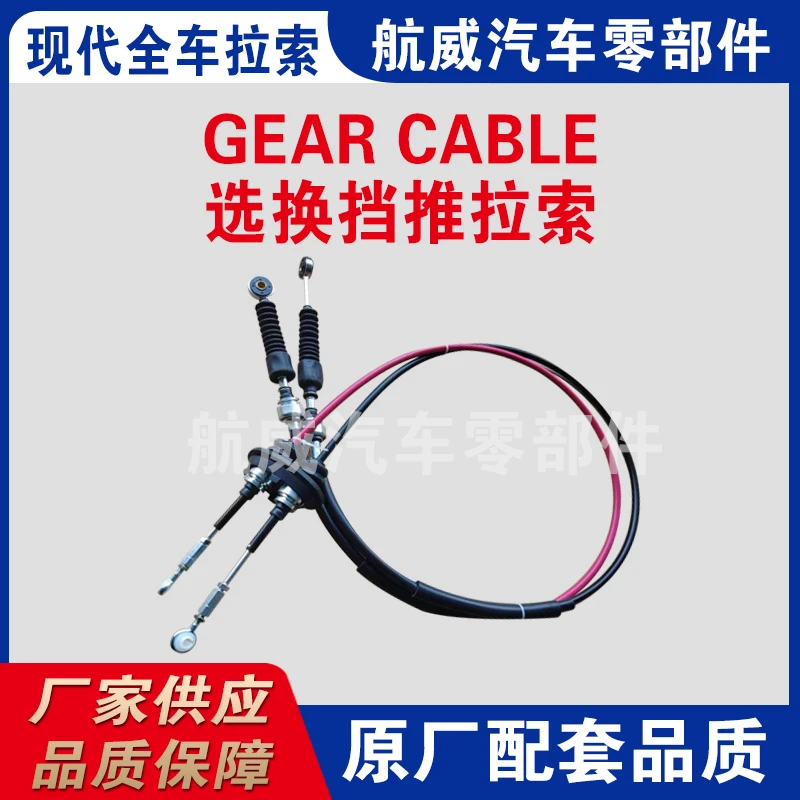trailer handbrake cable
Understanding Trailer Handbrake Cables Importance, Maintenance, and Replacement
When it comes to towing, safety is paramount. One of the critical components that ensure a safe towing experience is the trailer handbrake system, particularly the handbrake cable. This relatively simple yet essential part plays a vital role in the overall functionality of the trailer’s braking system. Understanding the intricacies of the trailer handbrake cable can enhance safety, as well as ensure optimal performance during towing operations.
What is a Trailer Handbrake Cable?
The trailer handbrake cable is a vital component that connects the handbrake lever to the trailer's brakes. It allows the operator to apply the brakes manually when the vehicle is stationary or to secure the trailer when not attached to a towing vehicle. The handbrake system can be essential in emergency situations where additional braking power may be necessary.
Importance of the Handbrake Cable
A functional handbrake cable enhances towing safety and accessibility. For instance, when parking on an incline, the handbrake prevents the trailer from rolling away. Moreover, in scenarios where the primary brakes fail, the handbrake can serve as a backup, providing extra stability and control. Consequently, it’s crucial for trailer owners to ensure the handbrake cable is in good working order.
Signs of Wear and Tear
Like all mechanical components, trailer handbrake cables can wear out over time due to usage and environmental factors
. Regular inspections can help identify signs of wear and tear, such as fraying, rusting, or stiffness. If the cable becomes difficult to pull or shows any signs of damage, it is advisable to replace it immediately to avoid compromising safety during towing.Maintenance Tips
trailer handbrake cable

1. Regular Inspection Periodically check the handbrake cable for signs of wear, rust, or damage. Make it a part of your pre-towing checklist. 2. Keep It Clean Rust and dirt can accumulate on the cable, leading to corrosion. Clean the cable using a soft cloth and apply a rust inhibitor spray to the metal parts.
3. Lubrication Apply a suitable lubricant to the moving parts of the cable. This will ensure smooth operation and prevent it from seizing.
4. Check Connections Ensure that the cable is securely attached at both ends – the handbrake lever and the brake mechanism. Any looseness can affect performance.
5. Test It Regularly test the handbrake’s function. Ensure that it engages and disengages smoothly and that the trailer remains secure when the brake is engaged.
Replacement of the Handbrake Cable
If the handbrake cable is showing significant signs of deterioration, replacement is necessary. Replacing the cable can be a straightforward task for those who are mechanically inclined. However, if you’re not comfortable with DIY repairs, consulting a professional is advisable.
To replace the handbrake cable, start by releasing the tension on the existing cable. Remove it carefully by detaching it from the handbrake lever and brake mechanism. Next, install the new cable by reversing the process, ensuring all connections are secure. It's essential to adjust the cable tension properly to guarantee effective brake operation.
Conclusion
In conclusion, the trailer handbrake cable may be a small component of the towing system, but its importance cannot be understated. Regular maintenance and inspections are necessary to ensure the cable functions properly and safely. By taking proactive measures, trailer owners can prevent accidents and enhance the overall safety of their towing experience. Whether you opt to handle maintenance and repairs yourself or seek professional help, staying informed about the condition of your trailer handbrake cable is crucial for safe towing practices.
-
Workings of Clutch Pipe and Hose SystemsNewsJun.04,2025
-
The Inner Workings of Hand Brake Cable SystemsNewsJun.04,2025
-
The Secrets of Throttle and Accelerator CablesNewsJun.04,2025
-
The Hidden Lifeline of Your Transmission Gear Shift CablesNewsJun.04,2025
-
Demystifying Gear Cables and Shift LinkagesNewsJun.04,2025
-
Decoding Clutch Line Systems A Comprehensive GuideNewsJun.04,2025
